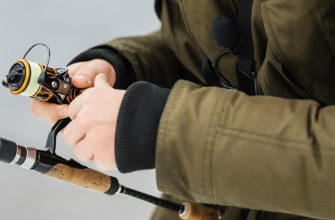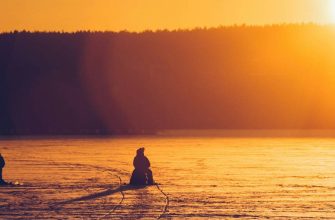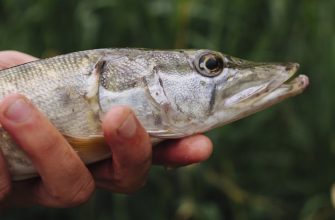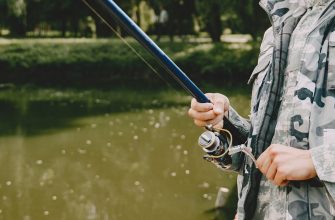- What is Jig Fishing?
- What is a Jig and Why Use It
- Matching Natural Forage Movements
- Slow Jigging vs Speed Jigging Approaches
- What Can I Catch When Jig Fishing?
- Bass Bonanza: Targeting Largemouth and Smallmouth Bass
- Crappie Craze: Reeling in Slabs of Crappie
- Giant Temptations: Walleye Tactics
- Pike Paradise: Tackling Northern Pike with Jigging Techniques
- Action and Abundance: Panfish Tactics
- Where to Go Jig Fishing
- Where to Pursue Productive Jigging
- Moving Waters: River Tactics
- Untapped Potential: Lakes
- Coastal Opportunities
- Untouched Gems: Ponds
- Guidance from the Experts
- Equipment Needed for Jig Casting
- Selecting the Right Jig
- Different types and sizes of jigs:
- Factors to consider when choosing a jig:
- Fishing Rods and Reels
- Recommended rod and reel combinations for jig fishing:
- Features to look for in a fishing rod and reel:
- Fishing Line and Leader
- Best types of fishing line for jig fishing:
- Importance of using a leader and how to choose the right one:
- Essential Jig Fishing Techniques
- Different Techniques Used in Jig Fishing
- 1. Pitching and Flipping: Close-Range Jig Fishing Tactics
- 2. Drag and Hop: Effective Jigging Techniques for Covering Ground
- 3. Swim and Glide: Optimal Methods for Jigging in Open Waters
- 4. Bottom Bounce: Proven Techniques for Bumping Jigs along the Bottom
- How to Properly Use a Jig to Attract Fish
- Tips for Successful Jig Fishing
- 1. Experiment with colors: Finding the perfect jig color blend
- 2. Observing and Reacting to Bites
- How to Detect and Interpret Bites While Jig Fishing
- Proper Hook-Setting Techniques
- 3. Vary Your Retrieve: Adding Action and Temptation to Jigs
- 4. Stay Persistent: Patience and Persistence Pay Off
- 5. Learn from the Pros: Insights and Strategies from Expert Jig Fishermen
- Conclusion
- FAQs
- Q: What is jigging in fishing?
- Q: How can I improve my jigging technique?
- Q: What types of lures are better suited for jigging?
- Q: Can you explain the “side to side” jigging motion?
- Q: How can I effectively jig a lure back to the bottom?
- Q: What are some tips for jigging in deep water?
- Q: Why is it important to use sharp hooks when jigging?
- Q: How can I step up my jigging game to attract more fish?
- Q: What are some common mistakes made by many anglers when jigging?
- Q: Should I count when jigging to maintain consistency?
Welcome to the world of jig fishing, an effective technique allowing anglers to catch various species. Whether you’re a seasoned angler or just starting out, mastering jigging can greatly enhance your chances of success on the water. It involves employing weighted hooks moving enticingly to prompt strikes. Correctly implementing jigs and tactics improves bite chances.
Properly identifying suitable deepness for target fish is key. Experiment with sink rates to pinpoint productive zones. Tailor offerings’ weights and retrieval to thoroughly explore levels where species hold.

Also, consider adjacent structures providing ambush points. Fish utilize rocks, logs and vegetation for shelter and bait attacks. Position rigs close by and utilize unsteady movements to imitate distressed prey. This prompts strikes.
Numerous jig options exist with models showcasing various forms, sizes and tones to imitate common forage. Identify and match local prey profiles to maximize efficiency. Test different pairings until discovering the best performers.
Patience and dedication remain vital in mastering jig fishing. Consistency allows the refinement of techniques for precise scenarios and fish varieties. Embrace an openness to on-the-water experimentation. In time, expertise develops allowing anglers to excel.
This article provides a comprehensive master class for effective jig fishing. It explores advanced techniques and strategies to target trophy specimens. Equip yourself with this exclusive knowledge to increase your catch rates and accomplish new personal bests!
I hope this updated version works well as an intro paragraph for the promised in-depth jig fishing guide. Please let me know if you would like any further refinements!
What is Jig Fishing?
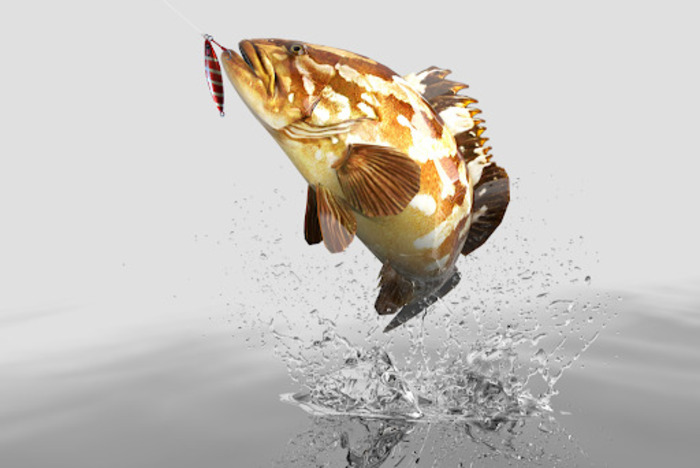
What is a Jig and Why Use It
A jig features a weighted head and hook effectively mimicking injured baitfish to attract predatory varieties. The heavy construction allows quick descent to target bottom-feeders. Components create lifelike movements prompting reflex strikes.
Numerous varieties exist including bucktail, tube and paddle tail adaptations. Lengthy materials affixed to hooks replicate fins eliciting instinctual attacks. Carefully selected colors and finishes accurately capture baitfish profiles suited for local varieties.
Matching Natural Forage Movements
Jigs are designed to mirror regional baitfish actions. When correctly worked, models convincingly replicate frantic fish attempts to flee. This prompts reflex striking from most game fish. By realistically impersonating helpless baitfish, jigs remain reliable for fooling predators.
Slow Jigging vs Speed Jigging Approaches
Two primary techniques are slow jigging and ripping retrieves. Slow jigging generates a fluttering descent, selling the narrative of a struggling creature. This works well on less active bottom dwellers.
Ripping involves aggressive upward jerking, making the jig dart erratically as if evading a threat. These sudden changes in trajectory aptly mimic panic, eliciting instinctual attacks from swift aggressors.
Understanding these two methods allows anglers to precisely match jig erratics to the behaviors of targeted species. Tailor presentation based on feeding habits to trigger strikes.
What Can I Catch When Jig Fishing?
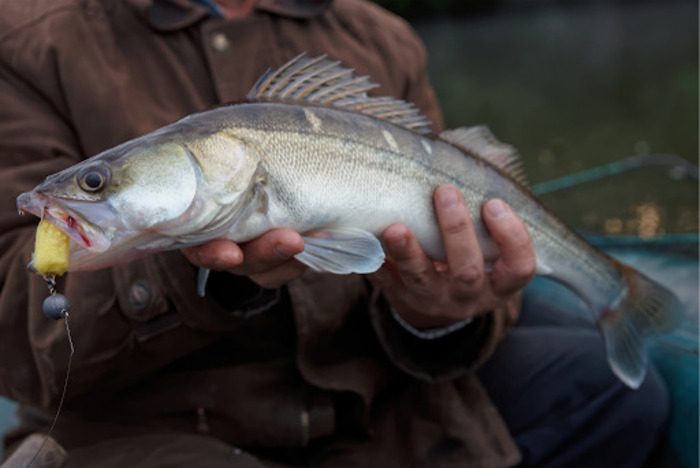
Bass Bonanza: Targeting Largemouth and Smallmouth Bass
This technique produces well for both largemouth and smallmouth bass. Largemouths prefer dense vegetation while smallmouths opt for rocky terrain and greater deepness.
The choice of offering affects outcomes based on species and conditions. Football styles imitate crawfish along bottoms while swim options replicate baitfish. Experiment with different attributes to identify preferences.
Crappie Craze: Reeling in Slabs of Crappie
Locations holding formations like brush or timber create crappie hotspots. Here suspended offerings draw reflex strikes. Although found year-round, follow seasonal movement patterns for best action.
Employ compact marabou or tube presentations in bold tones for the best action. Allow models to flutter downward mimicking small distressed creatures. Light tension indicates pickups from these delicate takers.
Read more: The Best Fishing Lines for Trout in 2024 | Fly-Fishing, Braid & More
Giant Temptations: Walleye Tactics
Walleye inhabit varied habitats from deep ports to currents, remaining difficult to pattern. Selecting the proper offering is key to triggering their feeding instincts.
Deep dwellers turn on vertically worked spoons while hair or swim alternatives are produced in shallow terrain. Adjust attributes until identifying the best-triggering factors to convince a walleye to feed.
Pike Paradise: Tackling Northern Pike with Jigging Techniques
In weeded corridors, near drop-ledges or other structural areas, northerns set up ambushes making them possible anytime. Use large, flashy spoons or bucktails to replicate hapless baitfish.
Upon casting near prime zones, utilize an erratic pulling technique to simulate injured fish. Such vulnerability triggers aggressive attacks from these apex predators.
Action and Abundance: Panfish Tactics
Submerged vegetation and formation provide reliable panfish locations in most freshwater. Compact yet lively jigs in natural patterns effectively tempt these cooperative biters.
A steady glide imitating aquatic creatures prompts reflex biting activity. Their willingness and numbers provide plenty of pole-bending action.
Where to Go Jig Fishing

Where to Pursue Productive Jigging
When selecting a location, abundant populations and structural elements are key. Rocky terrain and aquatic vegetation provide ambush spots for active biters. This increases the potential for an engaging experience.
Moving Waters: River Tactics
In rivers, focus efforts near slower pools and deeper pockets. Submerged timber and rock formations are prime areas to present offerings. Use these formation points to intercept traveling specimens like largemouth bass.
Untapped Potential: Lakes
Drop-offs, ledges and other deeper level changes attract fish in lakes. Here they ambush fish traversing between zones. Dialing in the properly matched selection unlocks success on a new body of water.
Coastal Opportunities
Near ocean reefs, wrecks and other formations, species like snapper and grouper stage. Work properly scaled choices near these high-potential areas to grab the attention of structure-oriented fighters.
Untouched Gems: Ponds
Even small ponds pump out willing biters. Submerged timber and vegetation provide cover that bluegill and crappie relate to. A subtle presentation is key to avoiding spooking fish in these intimate venues.
Guidance from the Experts
If you are new to jig fishing or want to enhance your skills, consider booking a fishing charter. These charters provide expert guidance and access to prime fishing spots. Here are some top fishing charters in the US:
- One More Charters
- Always Somethin’ Charters
- Chummy Fishing Charters
- Uncharted Adventures
These charters offer experienced captains who know the best fishing techniques for their local waters.
Equipment Needed for Jig Casting
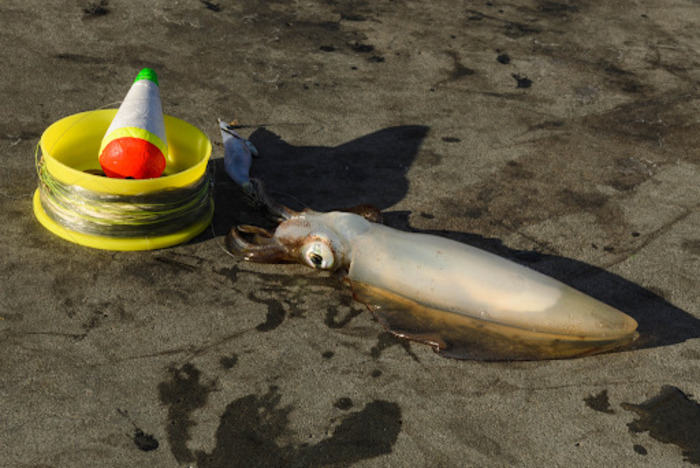
Selecting the Right Jig
There are different types and sizes of jigs available, each with its own unique characteristics. Here are some factors to consider when choosing a jig:
Different types and sizes of jigs:
- Football Jigs: These attractants have a wide, flat head that resembles a football shape. They are great for fishing in rocky areas and imitating crawfish.
- Swim Jigs: Designed to simulate the movement of baitfish, these attractants have a streamlined head and a thin, flat profile.
- Flipping Jigs: These attractants are designed for flipping and pitching techniques, allowing you to target specific formations and cover.
Factors to consider when choosing a jig:
- Color: The color of the attractant should match the species of predator in the area of fishing. Bright colors work well in clear water, while darker colors are more effective in murky water.
- Weight: The weight of the attractant will determine its sink rate and how deep it can reach. Heavier attractants are suitable for deeper waters, while lighter attractants are ideal for shallow areas.
Fishing Rods and Reels
Choosing the right rod and reel is very important for jig casting.
Recommended rod and reel combinations for jig fishing:
- Medium-Heavy Power Casting Rod: A medium-heavy power rod provides the backbone and strength needed to handle the weight of the attractant and the fish you are targeting.
- Baitcasting Reel: Baitcasting reels offer better control and accuracy when throwing jigs. Look for a reel with a high gear ratio for faster line retrieval.
Features to look for in a fishing rod and reel:
- Sensitivity: A sensitive rod will allow you to feel even subtle bites and movements, increasing your chances of detecting when a fish strikes.
- Durability: Look for a rod and reel that can withstand the demands of jig fishing, especially when targeting larger species like bass and walleye.
Fishing Line and Leader
Choosing the right fishing line and leader is vital for jig throwing. Here are some recommendations:
Best types of fishing line for jig fishing:
- Fluorocarbon Line: Fluorocarbon line is virtually invisible underwater, making it ideal for jig fishing in clear water conditions.
- Braided Line: The braided line offers excellent strength and sensitivity, making it suitable for fishing in heavy cover or when targeting larger species.
Importance of using a leader and how to choose the right one:
A leader is a length of line that is attached between the main line and the jig. It provides added protection against abrasion and can help prevent fish from seeing the main line. Choose a leader material that matches the fishing conditions and target species.
Essential Jig Fishing Techniques

Different Techniques Used in Jig Fishing
1. Pitching and Flipping: Close-Range Jig Fishing Tactics
Pitching and flipping are close-range jig fishing tactics that are highly effective in targeted areas such as heavy cover, docks, and vegetation. To execute these techniques, simply lift your rod, swing it forward, and release the jig towards the desired location. This technique allows for precise placement of the jig and simulates the natural movement of prey, enticing fish to bite.
2. Drag and Hop: Effective Jigging Techniques for Covering Ground
The drag and hop technique is ideal for covering larger areas of water. Throw your jig and let it sink to the desired deeper level. Then, slowly drag the jig along the bottom while intermittently hopping it to imitate the movement of a distressed baitfish. This technique is particularly effective for enticing bites from species like walleye and crappie.
3. Swim and Glide: Optimal Methods for Jigging in Open Waters
When targeting fish in open waters, the swim and glide technique can be highly effective. Throw your jig and let it sink to the desired deepness. Then, use a steady retrieve with occasional pauses and twitches to simulate the natural movement of a swimming сreature. This technique is known to attract a variety of species, including largemouth bass and bluegill.
4. Bottom Bounce: Proven Techniques for Bumping Jigs along the Bottom
For fish that reside near the bottom, such as bass and walleye, the bottom bounce technique can be highly successful. Throw your jig and let it sink to the bottom. Then, use a slow and steady retrieve, allowing the jig to bounce along the bottom. This technique imitates a baitfish that is feeding on the bottom, enticing fish to strike.
How to Properly Use a Jig to Attract Fish
To attract fish using a jig, it is important to consider the following tips and techniques:
- Jig Selection: Choose a jig that matches the size and color of the fish in the area you are fishing.
- Retrieve Speed: Experiment with different retrieve speeds to find what works best for the target species.
- Cadence and Jerks: Vary the cadence of your retrieve and incorporate occasional jerks to create an unsteady movement that simulates an injured or fleeing fish.
- Depth Control: Adjust the weight of your jig or use different jigging techniques to fish at various deeper levels.
- Target Structures: Focus on fishing around formations such as rocks, submerged logs, and vegetation, as these are often prime feeding areas for fish.
Remember, jig fishing is a versatile technique that can be adapted to various fishing environments and target species.
Tips for Successful Jig Fishing
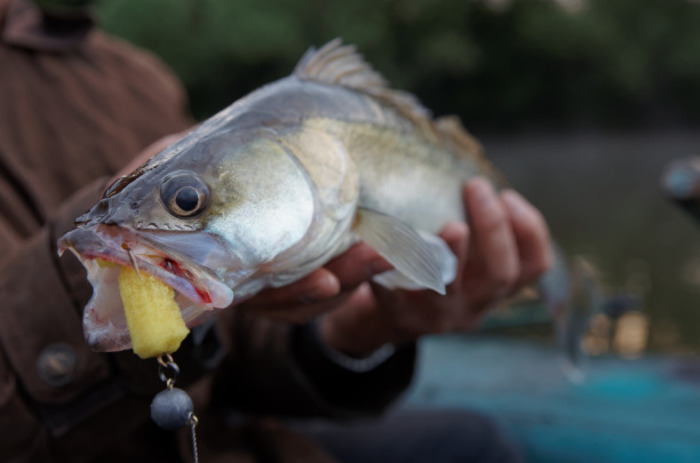
1. Experiment with colors: Finding the perfect jig color blend
When it comes to jig fishing, one important factor to consider is the color of your jig. Different colors can attract different types of fish, so it’s crucial to experiment and find the perfect color blend. Start by researching the local fish species in your area and their preferred bait. Use this knowledge to select jig colors that simulate the appearance of their natural prey.
2. Observing and Reacting to Bites
How to Detect and Interpret Bites While Jig Fishing
Being able to detect and interpret bites is a valuable skill for any jig fisherman. Pay close attention to your line and rod tip for any subtle movements or twitches. A sudden dip or tug on the line could indicate a bite. When you notice these signs, react quickly by setting the hook firmly to secure your catch.
Proper Hook-Setting Techniques
Proper hook-setting techniques are essential for successful jig fishing. When you feel a bite, resist the urge to immediately yank on the rod. Instead, smoothly and firmly set the hook by giving a quick upward jerk of the rod. This technique helps ensure that the hook is properly embedded in the fish’s mouth, increasing your chances of a solid hookset.
3. Vary Your Retrieve: Adding Action and Temptation to Jigs
To entice fish to strike your jig, it’s important to vary your retrieve. Experiment with different retrieval speeds, pauses, and jerks to create unsteady moves that simulate the movement of injured prey. This unpredictable action can trigger aggressive strikes from fish, increasing your chances of a successful catch.
4. Stay Persistent: Patience and Persistence Pay Off
Jig fishing requires patience and persistence. Don’t get discouraged if you don’t get immediate results. Keep trying different techniques, exploring different deeper levels, and adjusting your presentation until you find what works best. Remember, successful jig fishing often requires perseverance and a willingness to adapt to changing conditions.
5. Learn from the Pros: Insights and Strategies from Expert Jig Fishermen
One of the best ways to improve your jig fishing skills is to learn from experienced anglers. Seek out resources such as books, articles, and online forums where expert jig fishermen share their insights and strategies. By learning from their experiences, you can gain valuable knowledge and apply it to your own fishing endeavors.
Conclusion
As you wrap up this article, I want to encourage you to go out and practice your jig fishing skills. Remember, becoming a master at jigging takes time and practice. Don’t get discouraged if you don’t see immediate results. Just like any other skill, jig fishing requires patience and persistence.
Read more: Virginia Freshwater Fish Species
Use this article as your guide and start planning your next fishing trip. Let your jig dance in the water, enticing trout and other freshwater species. Experiment with different types of soft plastic baits that suit your fishing style. Vary your retrieve speed and add some tension to your line.
Typically, jig fishing involves using an artificial bait that you drop to the bottom and then snap back up, imitating the movement of prey. This technique is known to be effective in attracting a wide range of fish, from walleye to crappie.
Remember to choose the right jig weight for the deeper level you are fishing. Pay attention to the moves and deepness of your jig as you retrieve it. The key is to mimic the erratic appearance of a wounded baitfish, which can entice even the most reluctant fish to bite.
So, the next time you head out to the lake or river, grab your jigging rod and target those hidden formations along the shore. Increase your chances of success by honing your jig fishing technique and paying attention to the subtle movements of your bait. Before you know it, you’ll be reeling in trophy fish and enjoying the thrill of mastering the art of jig fishing.
Remember, practice makes perfect, so get out there and start jig fishing today!
FAQs
Q: What is jigging in fishing?
A: Jigging is a fishing technique that involves moving a lure up and down in the water column to entice fish to strike.
Q: How can I improve my jigging technique?
A: To improve your jigging technique, focus on maintaining a consistent rhythm and varying the speed and deepness of your jigging moving to simulate natural bait movements.
Q: What types of lures are better suited for jigging?
A: Lures such as jigs, soft plastics, and metal spoons are better suited for jigging as they are designed to be effective when moved in a jerky, irregular motion.
Q: Can you explain the “side to side” jigging motion?
A: The “side to side” jigging moving involves moving the lure horizontally, creating a zig-zag pattern to simulate the movement of injured or fleeing prey.
Q: How can I effectively jig a lure back to the bottom?
A: To effectively jig a lure back to the bottom, pause momentarily during the descent and then repeat the jigging move to maintain the lure’s enticing action.
Q: What are some tips for jigging in deep water?
A: When jigging in deep water, use heavier lures to reach the desired deepness and maintain control over the jigging moving in strong currents or windy conditions.
Q: Why is it important to use sharp hooks when jigging?
A: Using sharp hooks is important when jigging to ensure that fish are effectively hooked and to prevent missed strikes or lost fish during the retrieval process.
Q: How can I step up my jigging game to attract more fish?
A: To step up your jigging game, experiment with different jigging movings, incorporate subtle twitches and pauses, and pay attention to the fish’s response to refine your technique.
Q: What are some common mistakes made by many anglers when jigging?
A: Common mistakes include jigging too aggressively, using inappropriate tackle for the depth or conditions, and not paying attention to subtle strikes or bites.
Q: Should I count when jigging to maintain consistency?
A: Counting while jigging can help maintain consistency in the depth and rhythm of your jigging moving, especially when targeting specific fish species or in certain fishing conditions.

